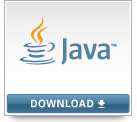
Chegou uma nova atualização do Java SE 7: update 40. Esta versão inclui várias novas funcionalidades como o Java Mission Control, Deployment Rule Set, suporta para o Retina display no Mac, e suporte a Hard Float ABI no Linux ARM v7. Também inclui diversas correções de bugs. Para quem desenvolve Applets e aplicações Java Web Start, este release, fica a atenção para conhecer e enteder as mudanças.
Deployment Rule Sets
Esta funcionalidade permite um administrador de desktops a controlar o nivel de compatibilidade para clientes Java assim como níveis de segurança para a empresa. Para maiores detalhes, veja a documentação do Deployment Rule Set.
Java Mission Control
O Mission Control era até então uma ferramenta disponível para clientes Oracle, e que foi lançada há muito tempo atrás junto com o JRockit (JRMC). Mas a Oracle agora disponibilizou a ferramenta junto com a JRE HotSpot 7u40.
Esta ferramenta permite monitorar, gerenciar, introspectar, e detectar memory leaks nas suas aplicações Java, sem ter que introduzir códigos para isso, que normalmente degradam a performance da aplicação. Hoje esta ferramenta está agora disponível no download do Oracle HotSpot JDK 7u40!
Flight Recorder
Mas a principal e mais importante característica é o Flight Recorder. Este recurso funciona através da leitura de eventos produzidos pela JVM. Mesmo ativando a geração destes eventos, a sobrecarga total para as suas aplicações ainda fica abaixo de 2%, que considerando o tipo e o valor de informação que você recebe, é quase nada. Um exemplo de evento é a chamada de um método de uma classe Java.
Com o profile de chamadas de métodos você pode descobrir onde o aplicativo está gastando a maior parte do tempo executando seu código Java. Este é, por exemplo, útil para otimizar a aplicação onde as otimizações realmente terão impacto. Isto sem precisar introspectar seu código manualmente!
Alem disso, você tem também uma visão de otimização para alocação de objetos. Você pode ver por exemplo, a alocação em tempo real de objetos na Old Gen da memória heap. diretamente no espaço de idade, além de outras abas que oferecem diversas informações importantes sobre o processamento de informações na sua aplicação Java. Leituras de arquivos I/O, Socket I/O e muito mais.
Se você precisa de mais informações sobre o Mission Control, entre na página da ferramenta em www.oracle.com/missioncontrol.
E obrigado ao Markus Eisele por ter cedido parte deste post! :-)

